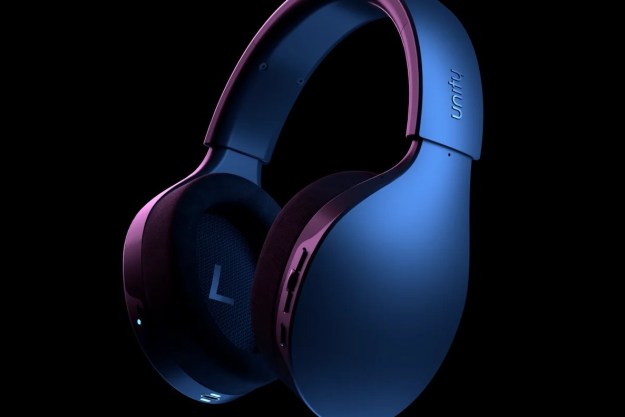High-resolution digital audio players are certainly on the rise in terms of popularity, but many of them are essentially super-powered iPods in terms of form factor and features. The Hong Kong-based company Nativ unveiled a new type of music player this week via an Indiegogo campaign that shows just how interesting the future of these players could be.
What Nativ has actually introduced is a three-piece music system, but at the heart of it lies the Nativ Vita — a digital audio player featuring an 11.6-inch touchscreen display and the ability to hold up to 4TB of music. Nativ says the Vita can stream music to “virtually any” wireless speaker or headphones, and features support for built-in streaming services like Spotify and Apple Music in addition to streaming from a smartphone or computer.
The Nativ Vita also supports a number of high-resolution audio formats including DSD up to 11.2896 MHz and DXD up to 32-bit/384 kHz, as well as the new MQA format. This format offers smaller file sizes than hi-res FLAC files while providing the same resolution, and features built-in authentication, which MQA Ltd. claims allows the format to deliver audio of the same quality as the original master.
“Nativ is a great addition for anyone who loves music,” Nativ CEO and co-founder Michael Li says. “From audiophiles with high-performance audio and A/V systems to the casual music fan with wireless speaker solutions. Nativ enhances your existing gear with great new features and allows you to experience music like never before.”
While the Vita is the heart of Nativ’s music system, it isn’t the only part. The Nativ Wave is a fully balanced DAC and headphone amp meant to be used with the Vita or with other sources like PCs. The Nativ Pulse, on the other hand, is meant to supply the DAC with clean power, for those who take their listening very seriously.
If all those features sound like they don’t come cheap, well, you’re right. The centerpiece, the Nativ Vita, will cost backers $1,000 (or $1,100 with a built-in 2TB hard drive) — which is a bargain compared to the $1,600 estimated retail price. And right now, Super Early Bird pricing is available to backers, bringing the price down to $700.
Pricing for the Wave DAC is similar: $1,000 standard or $800 for Super Early Bird pricing. If you plan on picking up the Pulse power supply as well, it and the Wave are available in a package for the Super Early Bird price of $1,200. If you’d rather just pay for the whole system in one shot, the Super Early Bird pricing for a complete system is $1,900.
The campaign has already reached more than two thirds of its $100,000 goal, and still has two months left to go. For more information and a look at the complete list of pricing packages available, see the Nativ Indiegogo campaign page.
Editors' Recommendations
- Next-gen wireless headphones will get lossless hi-res audio with a little help from Qualcomm
- What is a network music streamer and why do you need one?
- Earfun makes hi-res audio more accessible with affordable earbuds and DAC
- Tivoli Audio’s Model Two Digital speaker abandons terrestrial radio
- Tidal begins its rollout of hi-res lossless audio


